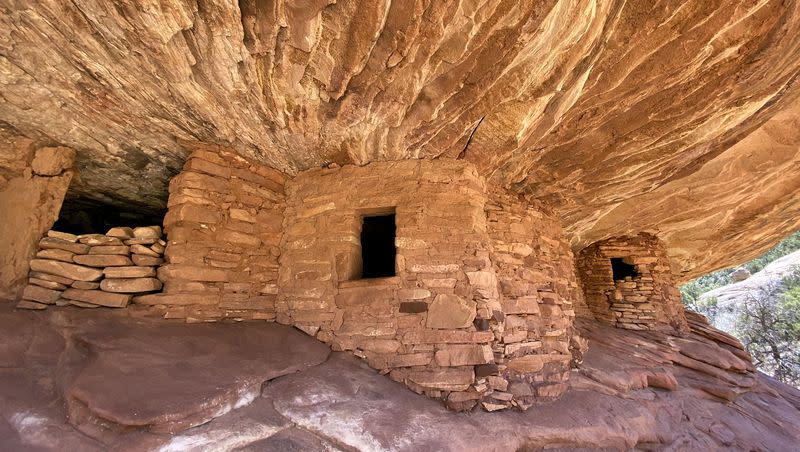Is the federal government neglecting the Bears Ears National Monument? Rep. Curtis questions Interior Secretary Haaland

- Oops!Something went wrong.Please try again later.
Rep. John Curtis pressed Interior Secretary Deb Haaland on the federal government’s oversight of Bears Ears National Monument in southeastern Utah, saying he thinks the agency has not appropriated requisite resources and staff to preserve and protect the area.
“Today, I think there are two (Bureau of Land Management) agents managing, imagine, 1.3 million acres,” Curtis said Wednesday morning at the hearing for the House Committee on Natural Resources.
“But not a single penny of resources has been sent their way after this 1.3 million acre designation that the federal government took on to preserve and protect,” he continued.
Under Democrat control, DOI thinks they know better than local and state governments on how to steward the land.
They don't and @RepJohnCurtis has a perfect example of it ↓ pic.twitter.com/9w1JPVvBQ7— House Committee on Natural Resources (@NatResources) April 19, 2023
The monument designation has been a point of debate between Democratic and Republican administrations for a number of years, while also highlighting public land management differences between members of the two parties.
Former President Barack Obama established the monument in 2016 by presidential proclamation in his last days in office. The designation, roughly the size of the state of Delaware, sought to bring the land under federal protection but was met by some local and state government opposition.
In 2017, former Utah Gov. Gary Herbert signed a resolution asking former President Donald Trump to rescind the monument designation. Later that year, Trump reduced the size of the monument from 1.3 million acres to approximately 200,000.
However, President Joe Biden called for a review of the reduction, and at Haaland’s recommendation ultimately restored the monument to its original size.
Related
At the committee hearing Wednesday, Curtis said he got to know Haaland well during her onsite review of the monument, but “you and I found ourselves on a different side of a very contentious issue,” he said.
Curtis said the federal government’s argument to retake stewardship over the land was, “‘we must do this to protect and preserve this area. We don’t trust the state. We don’t trust the county. ... We have to do it here from Washington, D.C.’”
The Republican congressman, who represents Utah’s 3rd District, which includes the monument, said he disagreed with this reasoning by the federal government and lamented their taking “stewardship of the area away from the state.”
Curtis said he believes local and state officials were doing a better job protecting the land: “We were doing that quite well as local, state governments. We feel like we preserved and protected that area in a magnificent way. And now the federal government is taking it over without adding any resources.”
The two federal agents assigned to patrol the area, Curtis said, are doing their best given the impossible task. “There is far more looting, far more grave robbing and vandalism in this area today,” he said.
Curtis asked Haaland, “How in the world is the federal government proposing to do what it said it was going to do when it made this a monument designation and took the stewardship away from the local people?”
Haaland agreed with Curtis that a lack of staffing at the Bureau of Land Management is a problem.
But Curtis interjected and added, “But it’s not just staff. You don’t even have the budget if you had the staff. The federal government made a decision several years ago to designate this as a 1.3 million acre monument to preserve it, and it has not even tried to put resources in to do that.”
The Utah congressman ended by asking how the federal government “justifies” taking stewardship of the land away from Utahns because “they thought they know better than the (local people),” then proceeded by “not doing anything in this area?”
Haaland responded by thanking Curtis for his comments, and saying, “I will absolutely take those to heart. ... I understand your concerns and they’re my concerns as well.”
Curtis said lawmakers and policymakers should understand the “tremendous responsibility” a monument designation incurs on the federal government.
“It’s not as easy as waving a wand and protecting all this area because we’ve designated it,” he said. “We’re taking that responsibility away from the state and we’ve really got to step up if we want to preserve and protect this area in a way that was different than before.”

